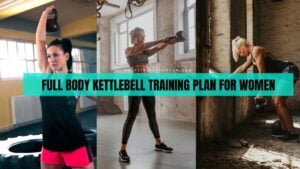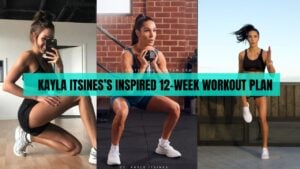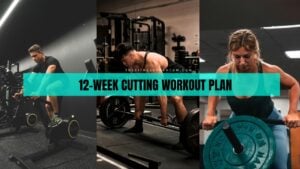The dumbbell pullover is a muscle-building exercise that primarily targets the chest and lats. It is an excellent exercise for adding strength and definition to your upper body.1 Marchetti, Paulo & Uchida, Marco C.. (2011). Effects of the Pullover Exercise on the Pectoralis Major and Latissimus Dorsi Muscles as Evaluated by EMG. Journal of Applied Biomechanics. 27. 380-4. 10.1123/jab.27.4.380.
You can do this exercise at the gym as well as at home with only a dumbbell and a bench. Performing the pullover correctly will help you build muscles, increase strength, and improve balance.
The dumbbell pullovers have different variations, including the flat, incline, and decline.
Each variation works differently to hit your upper body muscles and improve aesthetics.
Dumbbell Pullover Muscles Worked
The dumbbell pullover is a compound exercise. It works on various muscle groups, from the chest and back to triceps and abs.2 Dumbbell Pullovers are amazing – r/naturalbodybuilding – Reddit.com, 3Muyor, J.M.; López-Miñarro, P.A.; Alacid, F. Comparison of Electromyographic Activity during Barbell Pullover and Straight Arm Pulldown Exercises. Appl. Sci. 2022, 12, 11138. https://doi.org/10.3390/app122111138 Let’s understand how the pullover exercise trains these muscles.
- Chest: The chest is one of the major muscles worked during dumbbell pullovers. When you pull the dumbbell and squeeze it at the top, your chest engages entirely. (1)
- Latissimus Dorsi (Lats): The lats are large and flat muscles located on each side of your lower and mid-back. The pullover provides stretch to the lats and builds a wider back.
- Triceps: The dumbbell pullover also strengthens the triceps because it combines shoulder extension and elbow extension, both of which recruit the triceps brachii along with the lats and chest.
- Abdominals: The pullover indirectly strengthens the abdominals by forcing them to stabilize and support the torso as the arms move from the back of the head to the chest.
Dumbbell Pullover Benefits
1. Build Muscles
The dumbbell pullover is a great exercise that works several major upper body muscles at the same time.
It stretches and contracts your chest, lat, and triceps as you move the dumbbell from above your head back over your chest, and engages your abdominals to keep your spine stable.
Consistently doing the pullover helps these muscles grow bigger and stronger.
2. Increase Strength
The DB pullover enhances your grip and pulling strength. Better pulling strength helps you do better in other exercises, such as face pull, bent-over row, and deadlifts.
3. Improve Mobility
If you want to improve your mobility while building muscles, consider performing dumbbell pullovers, especially on the stability ball.
The pullover requires you to pull the weight from behind your head to over your chest while keeping your lower back and hips off the floor, and this helps you improve your body balance.4 Pullovers Will Transform Your Body (Muscle, Strength, Mobility) Fitness FAQs YouTube
Dumbbell Pullover Variations
You can do dumbbell pullovers in several ways to target the muscles from different angles. For example, you can do it on the floor, bench, or stability ball.
Here’s a list of pullover exercise variations:
- Flat Dumbbell Pullover
- Decline Dumbbell Pullover
- Incline Dumbbell Pullover
- Stability Ball Dumbbell Pullover
- Floor Dumbbell Pullover
Let’s see how to do them with the step-by-step guide.
1. Flat Dumbbell Pullover
A flat bench dumbbell pullover primarily hits the pectoral and lats muscles and helps enhance upper body strength.
Steps to perform:
- Grab the inner part of a dumbbell with your hands and place your upper back on the floor.
- Bend your knees to 75-90 degrees and keep your feet flat on the floor with hips and lower back parallel to the floor.
- Extend your arms behind your head (with your elbows straight). That’s the starting position.
- Slightly lift your lower back off the bench, inhale, and pull the dumbbell over you until it comes directly over your chest.
- At the top, Squeeze your chest and then return the dumbbell to the start.
2. Decline Bench Dumbbell Pullover
The decline pullover can be an effective exercise if you want to develop the chiseled lower chest and provide more stretch to the latissimus dorsi.
To perform this movement, you need an adjustable workout bench so you can make it a 30-degree decline.
Steps to perform:
- Grab the dumbbells and adjust yourself on the declined bench.
- Stretch your arms behind your head, brace your core, inhale, and pull the dumbbell overhead until your arms are directly over your chest.
- Squeeze your chest at the top and then lower to the start. That’s one repetition.
- Keep your arms extended during the movement so that you can engage your pecs.
- Do three sets of 10-12 reps with 2 minutes of rest in between.
3. Incline DB Pullover
The incline dumbbell pullover focuses more on the upper pecs and triceps than the above two variations. So, when you want to focus on your chest and triceps on the same day, do this exercise.
Steps to perform:
- Set a bench at a 30-degree incline, grab one dumbbell, and lie on the bench with your feet firmly on the floor.
- Hold the inner part of the dumbbell with both hands and extend your arms behind your head, with your elbows slightly bent. That’s your starting position.
- Keeping your core tight and arms straight, pull the dumbbell toward your torso until your arms are straight over your chest.
- Hold for a moment and then return to the starting position. That’s your one repetition.
4. Stability Ball Dumbbell Pullover
The stability ball pullover is more about improving balance than building muscles. It’s an advanced movement, but you’ll be better at it over time.5 Yu W, Cha S, Seo S. The effect of ball exercise on the balance ability of young adults. J Phys Ther Sci. 2017 Dec;29(12):2087-2089. doi: 10.1589/jpts.29.2087. Epub 2017 Dec 7. PMID: 29643579; PMCID: PMC5890205.
Steps to perform:
- Holding one dumbbell with your hands, place your upper back on the stability ball and your feet firmly on the floor with your knees bent.
- Extend your arms back and brace your core.
- Pull the dumbbells all the way from over your head to your chest. You’ll feel the work in your pecs at this moment.
- Pause and then return to the start and repeat for the desired reps and sets.
5. Floor Dumbbell Pullover
You can also do the dumbbell pullover lying on the floor. It strengthens your pecs and develops upper body musculature. However, it limits the range of motion and isn’t as effective as other pullover variations.
The floor dumbbell press involves the following steps:
- Start by lying on the floor, holding the inner part of a dumbbell with both hands, bending your knees, and placing your feet on the ground.
- Move your arms behind your head until your chest and lats are stretched. Do not bend your elbows.
- Keeping your abdominal muscles tight, pull the dumbbell overhead until your arms are directly over your lower chest.
- Pause for a second, and lower the dumbbell behind your head. That’s your one rep.
- Complete as many reps as you feel are enough.
Tips for Dumbbell Pullovers
When it comes to building muscles, form is everything. With the right technique, you can target the muscles you want. And, if your form is poor, you won’t get the desired result.
Here are a few tips you can consider while performing the dumbbell pullovers.
- Your abdominal muscles should be engaged throughout the movement. Keeping your core tight provides stability to your spine and protects your lower back from any discomfort during and after the training session.6 Huxel Bliven, Kellie C, and Barton E Anderson. “Core stability training for injury prevention.” Sports Health vol. 5,6 (2013): 514-22. doi:10.1177/1941738113481200
- Maintain a soft bend in your elbows during the movement.
- Perform each rep with a full range of motion. Pull the dumbbells from behind your head until your arms are straight over your lower chest so you can feel the work in your pecs.
- Keep your feet firmly on the floor. It helps pull the weight effectively toward your chest during the movement.
Possible Dumbbell Pullover Alternatives
The dumbbell pullover is an effective exercise for developing strength and mass in your lats and pecs. However, if you don’t do it for any reason, you can do the following exercises with dumbbells.
| Pullover Alternatives for the Chest | Pullover Alternatives for Lats |
|---|---|
| Dumbbell Bench Press | Dumbbell Superman Pull |
| Dumbbell Squeeze Press | Bent-over Dumbbell Row |
| Dumbbell Fly | One-arm Dumbbell Row |
These exercises aren’t identical to the pullover in terms of how that works, but they help you develop your chest and latissimus dorsi.
Frequently Asked Questions (FAQs)
How Heavy Dumbbells Should You Use?
You can use as heavy a dumbbell as you want, as long as you perform the recommended 8 to 12 reps with the correct form.
What Muscles Do The DB Pullovers Train?
The pullover is a compound movement that trains multiple muscles throughout the body, including the chest, lats, triceps, and abdominals.
Are Pullovers Bad for Shoulders?
Pullovers are not bad for the shoulders as long as you perform them with the proper form. They even help strengthen your delts and increase your shoulder mobility. But avoid it if you have any shoulder discomfort.
On Which Day Should You Do the Pullover, Chest or back?
Adding the pullover to your chest or back day can be more effective as it works these muscles effectively.
References
- 1Marchetti, Paulo & Uchida, Marco C.. (2011). Effects of the Pullover Exercise on the Pectoralis Major and Latissimus Dorsi Muscles as Evaluated by EMG. Journal of Applied Biomechanics. 27. 380-4. 10.1123/jab.27.4.380.
- 2Dumbbell Pullovers are amazing – r/naturalbodybuilding – Reddit.com
- 3Muyor, J.M.; López-Miñarro, P.A.; Alacid, F. Comparison of Electromyographic Activity during Barbell Pullover and Straight Arm Pulldown Exercises. Appl. Sci. 2022, 12, 11138. https://doi.org/10.3390/app122111138
- 4Pullovers Will Transform Your Body (Muscle, Strength, Mobility) Fitness FAQs YouTube
- 5Yu W, Cha S, Seo S. The effect of ball exercise on the balance ability of young adults. J Phys Ther Sci. 2017 Dec;29(12):2087-2089. doi: 10.1589/jpts.29.2087. Epub 2017 Dec 7. PMID: 29643579; PMCID: PMC5890205.
- 6Huxel Bliven, Kellie C, and Barton E Anderson. “Core stability training for injury prevention.” Sports Health vol. 5,6 (2013): 514-22. doi:10.1177/1941738113481200






